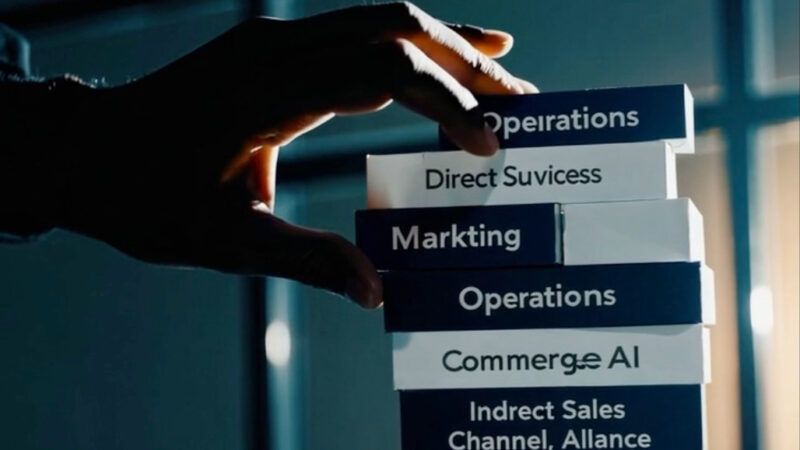Pillars of Change – A CEO’s COVID Story (Pillar #1)
It was a week after the pandemic was acknowledged, and only 3 days away from when I would be presenting the biggest change of plans in the company’s history to my Board of Directors.
On March 17th, I was staring at my metrics for 2020, and my eyes were glazed over…trying to get my head around how we would approach this pandemic.
There are many ways of measuring a SaaS company’s efficiency: magic number, payback period on cost of customer acquisition, and lifetime value to cost customer acquisition ratio, for example. These metrics primarily focus on measuring efficiency in customer acquisition – something that would guide me in making a bold recommendation to the Board.
Efficiency in Customer Acquisition
My 2020 model for LTV:CAC (Life Time Value to Customer Acquisition Cost ratio) was 3.3 for my SMB business; and 11.9 for my Mid-Market(MM)/Enterprise(ENT) businesses by year end, 2020. I was deep into understanding how much the business spent to generate an annual recurring dollar for each of my customers within each of these business segments, with this formula:
Cost_of_Annual_Recurring_Dollar = (Cost_of_S&M_Acquisition + Cost_to_Serve) $ / ARR_Bookings_with_expansions $
To figure out total CAC over the year, we started with the total annual sales and marketing costs plus cost to serve – which are the costs of customer success and technical support. We then took the annual CAC and divided by ARR from new logos and expansions produced by those investments.
Then turning to our Customer-Life-Time-Value, we used Gross Profits as our measure of value, and segmented our customers by business segments as well. We wanted to model the recurring gross profit dollar from new logo ARR bookings and ARR expansions over the life of the customer. Our equation for this was the following:
Customer_Lifetime_Value = Annual Gross Profit % / Annual Churn %
If a company suffers a high churn rate, the business must acquire an initial customer and then pay again to acquire another customer later that year to replace the gross profit contribution of the churned customer. [Note: If you wanted a dollar value for this, simply replace Gross Profit % with Gross Profit $].
Then we solved for the LTV:CAC ratio using the above formulas for each business segment. The LTV:CAC ratio is normally used as a metric of when to ramp sales and marketing spend. If the ratio is greater than 3x, then it’s time to spend more. But I was studying it for a different reason….more about that in a minute. So here’s where the data landed:
| LTV:CAC | 2020 | 2024 |
| SMB | 3.3 | 6.5 |
| MM/ENT | 11.9 | 35.9 |
This wasn’t bad. Our blended LTV:CAC was over 5x!! However, when I dug into the next set of metrics, my Board recommendation would start to present itself.
I began pondering the CAC Payback Period, which is the number of months required to pay back the upfront customer acquisition costs after accounting for the variable expenses to service that customer. We used the following equation:
Payback_in_months = ( (Cost_of_S&M_Acquisition + Cost_to_Serve) / #_of_Customers_Acquired ) / ( Avg_MRR_Per_Customer * GM % )
So here’s where our cut of the data landed:
| Payback (months) | 2020 | 2024 |
| SMB | 14.4 | 14.7 |
| MM/ENT | 14.0 | 10.6 |
At the surface, this seemed all good too. So what’s the issue? Then it hit me. Holly shit, I was going to make the most unintuitive decision for the business based on this data and my first core pillar.
Pillar #1 – Cash Flow Break Even
There were so many variables to my new strategy, so I ended establishing 5 key pillars. My first was to gain control over our lifeblood of the business – our cash. Reaching a cash flow breakeven was going to be our starting point.
I applied this lens by looking at how newly acquired customers would help or hurt our cash position. When you analyze the business on a cash basis, it didn’t take long to appreciate that for every SMB customer we closed and served, each would cost us precious cash for up to the 14.4 months – aka when we ultimately hit the payback period.
Why does this only apply to SMB, when MM/ENT customers produced a payback period of 14 months (vs. 14.4 for SMB)? One simple answer – payment terms.
| Payment Terms | |
| SMB | Month-to-Month |
| MM/ENT | 1 year paid upfront |
We had an incredible SMB sales team. They rocked. But for every deal that they would close, 90% of them would be contracted month-to-month, and paid net30 AFTER services were delivered at the end of the month. Sure, we could change that, and have customers pay upfront for a given month. Heck, we might even get lucky to get SMB customers to pay 3 months upfront. But could we get them to pay 14 months upfront? Answer: no way in hell. They are SMB customers, who all live by the month – ESPECIALLY with COVID soon to hit.
My mid-market and enterprise contracts; however, were structured as 1-year contracts that were paid upfront for 12 months. So my exposure would be worst-case 2 months (with a break even at 14 months – 12 months paid upfront = 2 months). But that . assumed that they didn’t renew a year later and pay another 12 months upfront (that, obviously, would easily cover me from a cash basis….and we all know that gross retention and net retention are better with MM/ENT vs. SMB – but that’s a whole different story).
So what did this mean? If I wanted to us to reach cash-flow breakeven, I would have to shift our focus from direct SMB selling to MM/ENT selling 100%, immediately. But how could I do that? My SMB sellers were rockstars, consistently beating plan, and driving a significant portion of the ARR top line to the business. That led me to Pillar #2.




